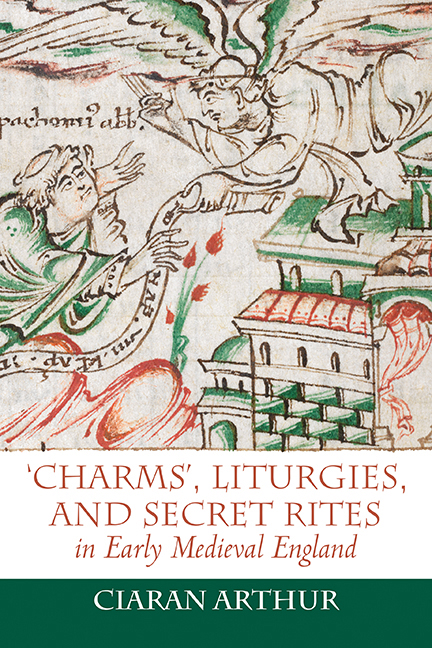Conclusion
Published online by Cambridge University Press: 27 July 2018
Summary
Anglo-Saxon ‘charms’ have been consistently understood as remnants of heathen religion or heterodox blends of Christianity and paganism. These texts have been extracted from their manuscript sources and often studied in isolation from them. There are significant problems with this approach as the concept of the ‘charm’ did not enter the English language until after the Anglo-Saxon period, and this calls into question how the manuscripts’ scribes and readers understood these rituals. As the Christian nature of ‘charms’ is crucial to understanding these texts, it is necessary to re-evaluate them as rituals that were embedded in the ecclesiastical culture of late Anglo-Saxon England, in places such as the Old and New Minsters, Winchester and Canterbury Cathedral.
This book has critiqued three core issues that lie at the heart of the genre of Anglo-Saxon ‘charms’. By reconsidering the meanings of galdor, the manuscript contexts that surround these rituals, and the learned nature of ‘gibberish’ writing, we can understand more about how early English scribes and ecclesiastics viewed these rituals as powerful Christian practices. While I have not considered every ‘charm’ in the corpus, I have examined a representative selection of texts from this ‘genre’ that are found in a range of manuscripts. I argue that scholars should abandon the concept of ‘charms’ in Anglo-Saxon England – with all of its connotations of paganism, superstition, and heterodox Christianity – and discuss them as they were viewed by the scribes and ecclesiastics who wrote them down. These texts are Christian rituals that developed from learned traditions and that were components of new liturgies for the sick, the possessed, travellers, political leaders, monastic communities, and lay people. They frequently incorporate prayers, formulas, and objects from other liturgies, and many seem to employ complex strategies of textual concealment, indicating that only highly skilled ecclesiastics could read and perform them. Over the course of this book, it has become apparent that these rituals are not vestiges of paganism that were clumsily miscopied, manipulated, or assimilated into heterodox Christian practices; they are deeply integrated in early medieval Christian liturgy, theology, and philosophy.
- Type
- Chapter
- Information
- 'Charms', Liturgies, and Secret Rites in Early Medieval England , pp. 215 - 218Publisher: Boydell & BrewerPrint publication year: 2018



